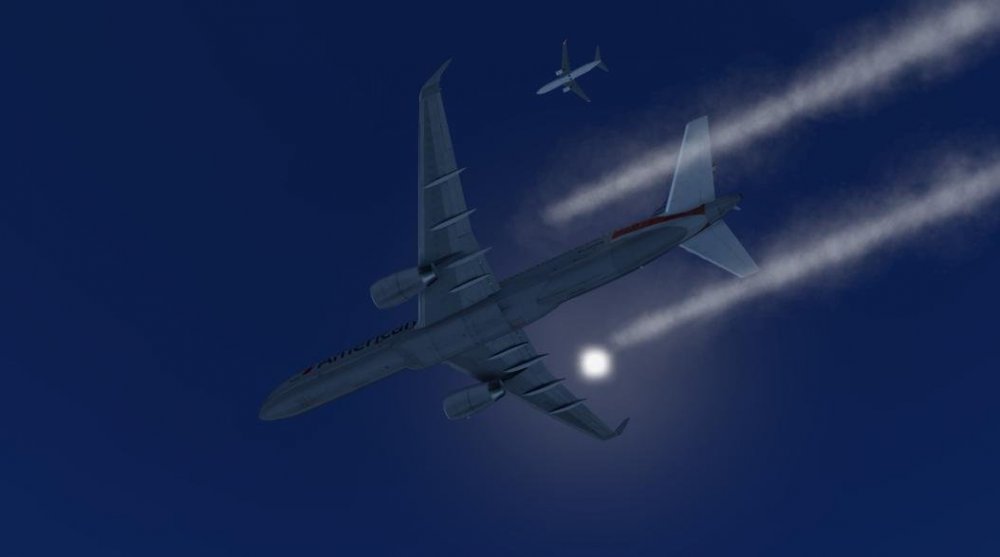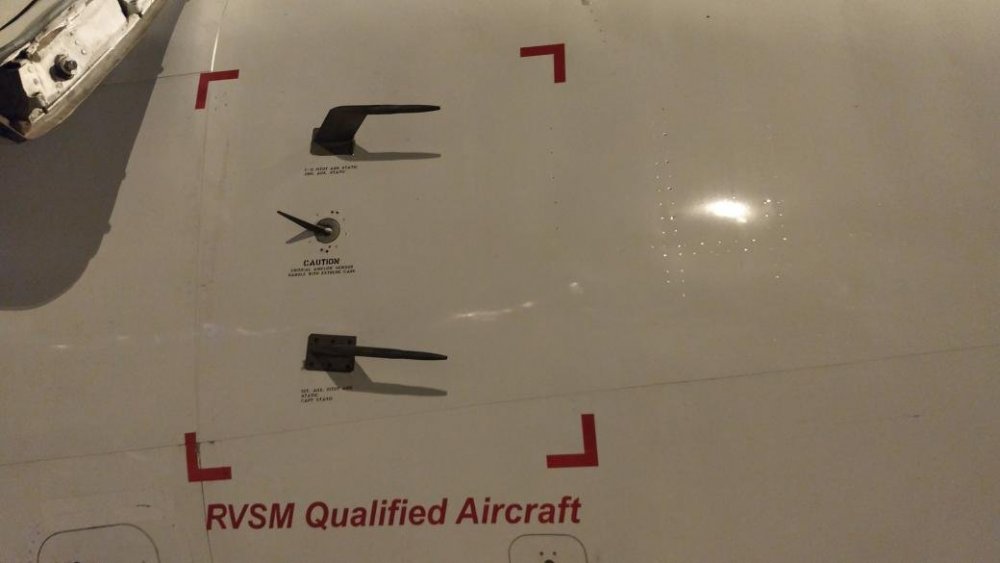RVSM - What's the significance?
I'm sure you've seen those four letters before - RVSM - and you may have a fundamental knowledge about the airspace, but do you know why it exists? Here are the answers to the most basic questions:
- Where do we find RVSM airspace? Higher cruising altitudes.
- What happens in RVSM airspace? Airplane separation is reduced vertically.
- Why does RVSM airspace exist? To allow more aircraft in the sky.
There you have it... the simple definition of RVSM. Now, let's get technical:
 RVSM stands for Reduced Vertical Separation Minima and it's located between FL290 (29,000ft) until FL410 (41,000ft) inclusive. To understand RVSM, you must first understand what the vertical separation requirements were above FL290 before 2005. Prior to RVSM, aircraft were required to be separated by 2,000 feet vertically above FL290 due the possibility of altimetry errors at the higher flight levels. RVSM airspace allows for a reduction in vertical separation between qualifying aircraft in order to allow more aircraft to operate in crowded enroute airspace thereby allowing for more efficient traffic flows. Airplanes of course move a lot faster at higher altitudes though, so it is only natural that this little amount of separation may make even the most vigilant pilot a little nervous. However, it is important to note that before implementing RVSM, aviation authorities instituted a required set of parameters that must be met in order to operate in RVSM. If any of these parameters cannot be met before entering or while operating within RVSM airspace, the aircraft is required to advise ATC and exit RVSM.
RVSM stands for Reduced Vertical Separation Minima and it's located between FL290 (29,000ft) until FL410 (41,000ft) inclusive. To understand RVSM, you must first understand what the vertical separation requirements were above FL290 before 2005. Prior to RVSM, aircraft were required to be separated by 2,000 feet vertically above FL290 due the possibility of altimetry errors at the higher flight levels. RVSM airspace allows for a reduction in vertical separation between qualifying aircraft in order to allow more aircraft to operate in crowded enroute airspace thereby allowing for more efficient traffic flows. Airplanes of course move a lot faster at higher altitudes though, so it is only natural that this little amount of separation may make even the most vigilant pilot a little nervous. However, it is important to note that before implementing RVSM, aviation authorities instituted a required set of parameters that must be met in order to operate in RVSM. If any of these parameters cannot be met before entering or while operating within RVSM airspace, the aircraft is required to advise ATC and exit RVSM.
Before we get into other details about RVSM lets recall that in many countries, the East ODD and West EVEN rule applies to vertical separation. This practice ensures that two airplanes are never assigned the same altitude flying in opposite directions. In some regions that are geographically more north/south split such as Italy or Florida for example, they have elected to modify the rule to favor North ODD and South EVEN as the determining factor for vertical separation. Either way a region chooses to separate traffic, it is important to recognize that these rules exist are crucial to establishing a baseline for high altitude vertical separation.
Now that we have covered the basic rule for opposite direction vertical separation, let's talk about what makes an aircraft RVSM approved. In order for an aircraft to operate in RVSM airspace, a certification is required from the governing agency of that nation (FAA, local CAA's, etc.), but the basic equipment that an aircraft should have operational include: an autopilot, two independent altimeters, a transponder with an altitude reporting capability, and an altitude alerting system. During flight in RVSM airspace, pilots will cross check their two independent altimeters to ensure the difference does not exceed a specified tolerance, which could range anywhere between 50ft to 200ft. If any of these items malfunction during flight in RVSM airspace, notification to air traffic control is essential.
Let's talk about air traffic controller's responsibilities in regards to RVSM airspace. Aircraft will have an equipment code in their flight plan assuring ATC that they are RVSM compliant and capable. If an aircraft alerts that they are no longer RVSM capable, ATC will have to either ensure separation of 2,000ft with that aircraft at all times or descend the aircraft outside of RVSM (below FL290). However, just because an aircraft is not RVSM capable does not mean they can never fly between those altitudes. Many corporate jets are not RVSM capable but still request to cruise above RVSM airspace (e.g. FL430). In this scenario, the controller will climb the aircraft through RVSM airspace while ensuring 2,000ft separation is maintained between other traffic at all times.
On a final note, RVSM aircraft require a maintenance certification as well. The next time you start up your flight sim and connect to POSCON for  your online flight simulation experience, take a look at the outside of your aircraft. Depending on the quality of the aircraft in terms of realism and study level, you should see what's called an RVSM critical area (see image to the right). Aircraft maintenance technicians must run specific tests and certify that everything located within this box meets the required RVSM tolerances, which are often stricter than in flight checks accomplished by pilots. Static ports, pitot tubes, and AOA vanes are small examples of what can be found in these boxes, of course, these are important functions that will assure RVSM tolerances when in flight. Pilots check this box during preflight inspections to ensure this critical area is free of residue, damage, dents, or other non-normal appearances on the components in the boxed lines.
your online flight simulation experience, take a look at the outside of your aircraft. Depending on the quality of the aircraft in terms of realism and study level, you should see what's called an RVSM critical area (see image to the right). Aircraft maintenance technicians must run specific tests and certify that everything located within this box meets the required RVSM tolerances, which are often stricter than in flight checks accomplished by pilots. Static ports, pitot tubes, and AOA vanes are small examples of what can be found in these boxes, of course, these are important functions that will assure RVSM tolerances when in flight. Pilots check this box during preflight inspections to ensure this critical area is free of residue, damage, dents, or other non-normal appearances on the components in the boxed lines.
On POSCON, our air traffic controllers are well trained on RVSM procedures. When flying online, ensure your aircraft is RVSM capable and make sure you indicate it properly in the flight plan equipment code section ("W" is the letter identifying that the aircraft RVSM capable). If you do not include "W" and are offered an RVSM altitude (it happens), simply say to ATC "Negative RVSM". And of course if you are having issues with your autopilot, now you know you are required to tell air traffic control.
After reading this article, you should be confident answering when and why the "W" equipment code is required in your flight plan. It is true, there are far too many acronyms in the aviation world, but at least you got RVSM down! See you on POSCON in RVSM and don't forget the whiskey! (get it?)




3 Comments
Recommended Comments